The clinicians of Lancaster General Hospital are pros at hosting PRI courses. Last weekend’s Postural Respiration course was their seventh. This instructor had moments of déjà vu, since LGH was the location of the first PRI course I attended, back in 2007. Two participants, Deborah Schrodi, PT, and Cathy Ingram, PT, were also in attendance at that very course 15 years ago! The surrounding Amish community, who eschew automation, provided an interesting contrast to our modern way of life and its epidemics of myopia, asthma, and loss of movement variability. These modern ills can be traced, by-and-large, to technological “advancements”.
Underscoring the Institute’s interdisciplinary mindset, the class was comprised of a mix of clinicians, including physical therapists, physical therapy assistants, athletic trainers, massage therapists, and personal trainers. Many were new to the science, while others had multiple PRI courses under their belt.
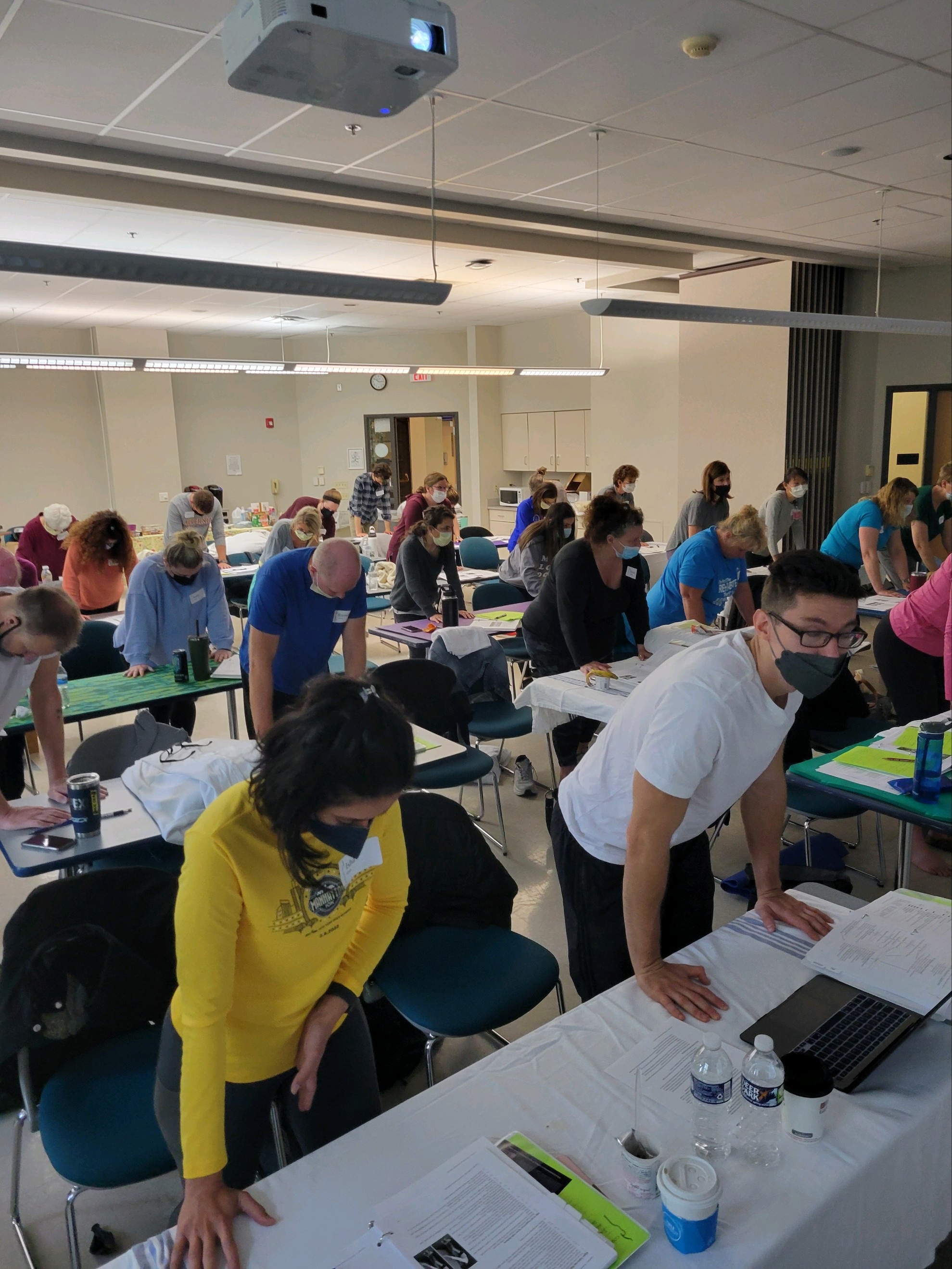
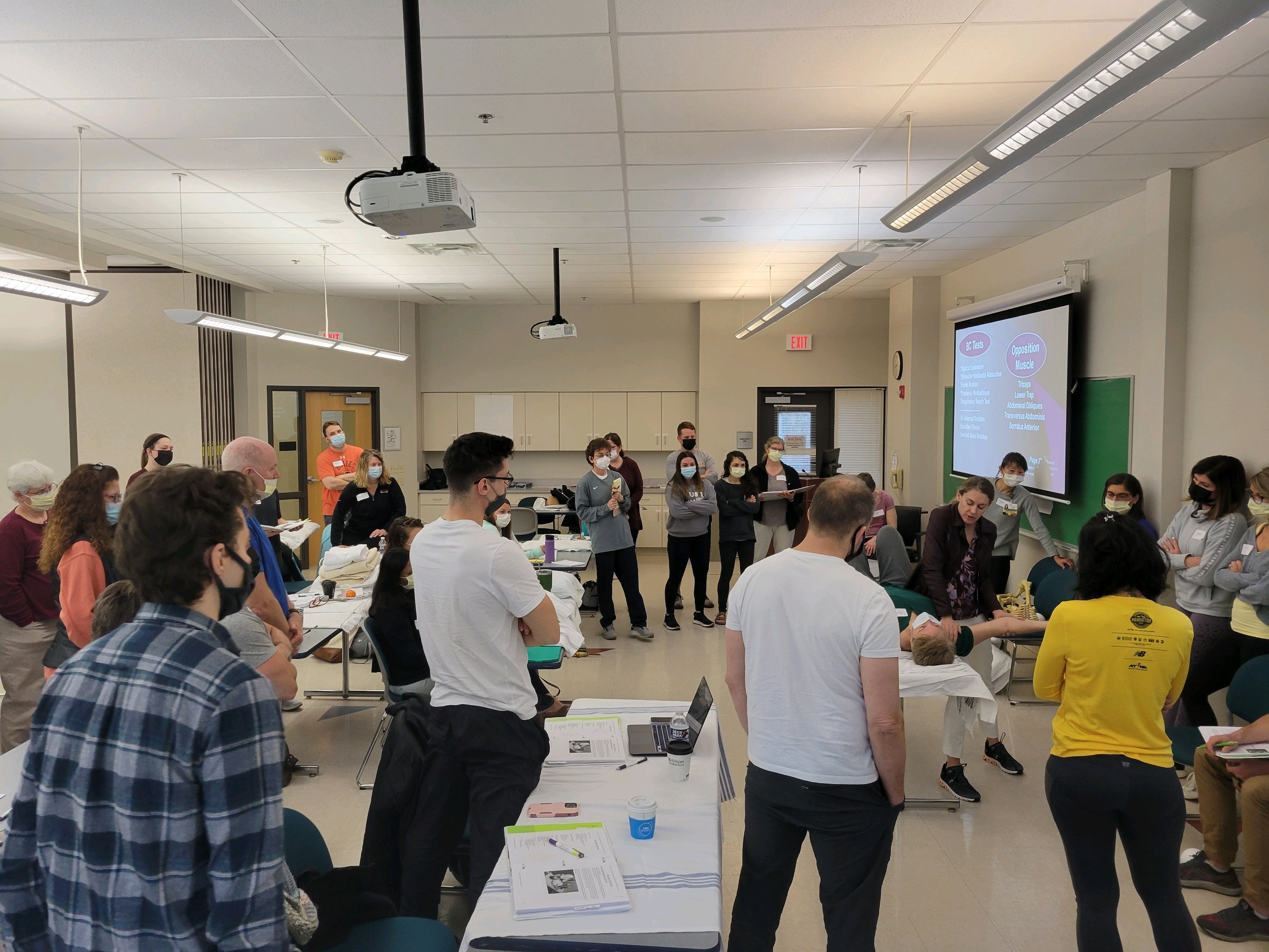
The Institute continually works to update course material, adding research articles and patient photos and videos to illustrate and support course concepts. Our left and right hemi-diaphragms are different in size and have differences in abdominal support. This “static asymmetry” creates a teeter-totter effect within our body, keeping us reflexively alive and providing a starting point from which to move. When this teeter-totter situation reaches a tipping point, we have only a “totter”. The right side remains pinned-down, grounded, and compressed. The left side is held aloft, remaining ungrounded and decompressed. We cannot thrive in this state.
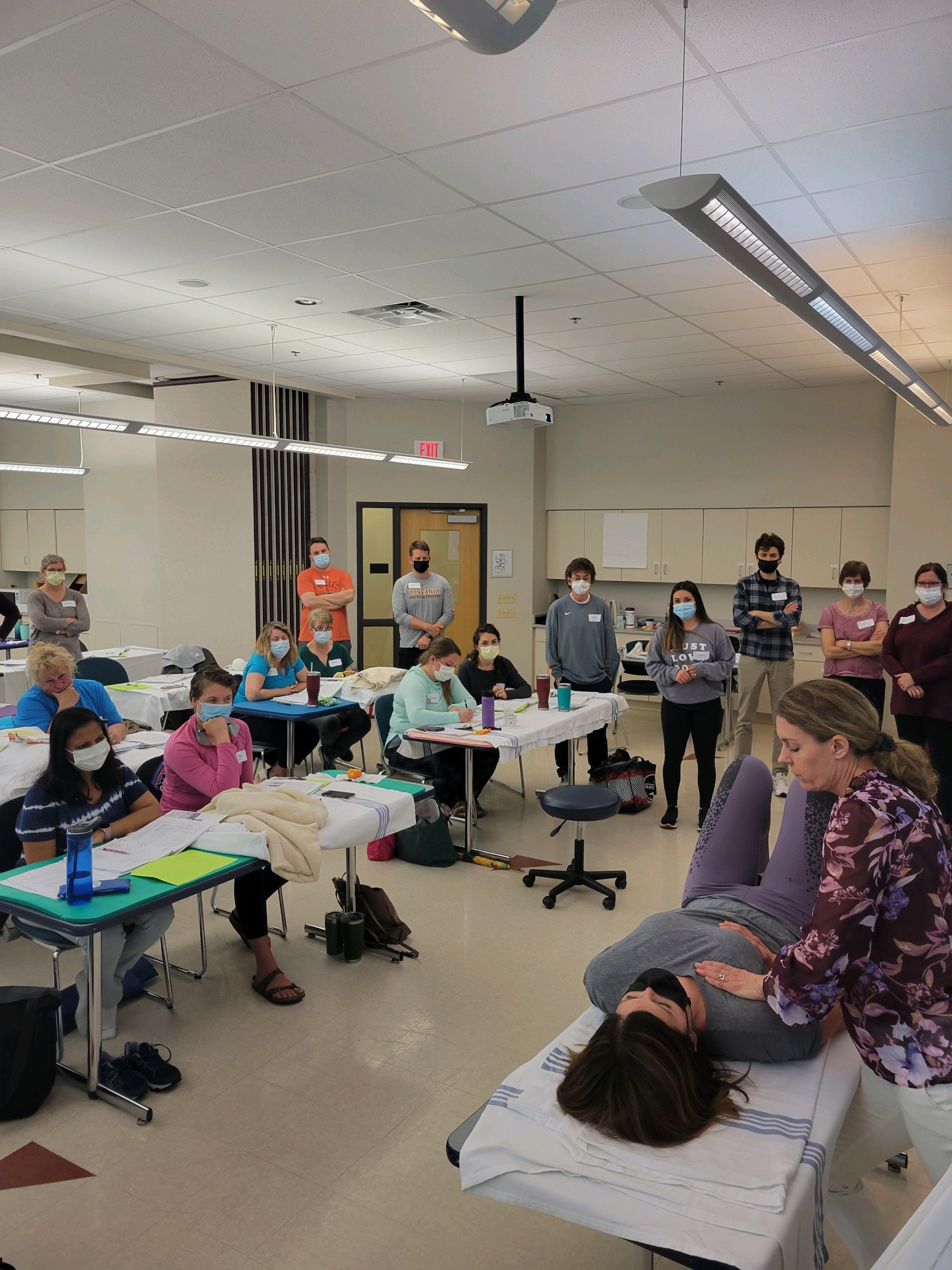
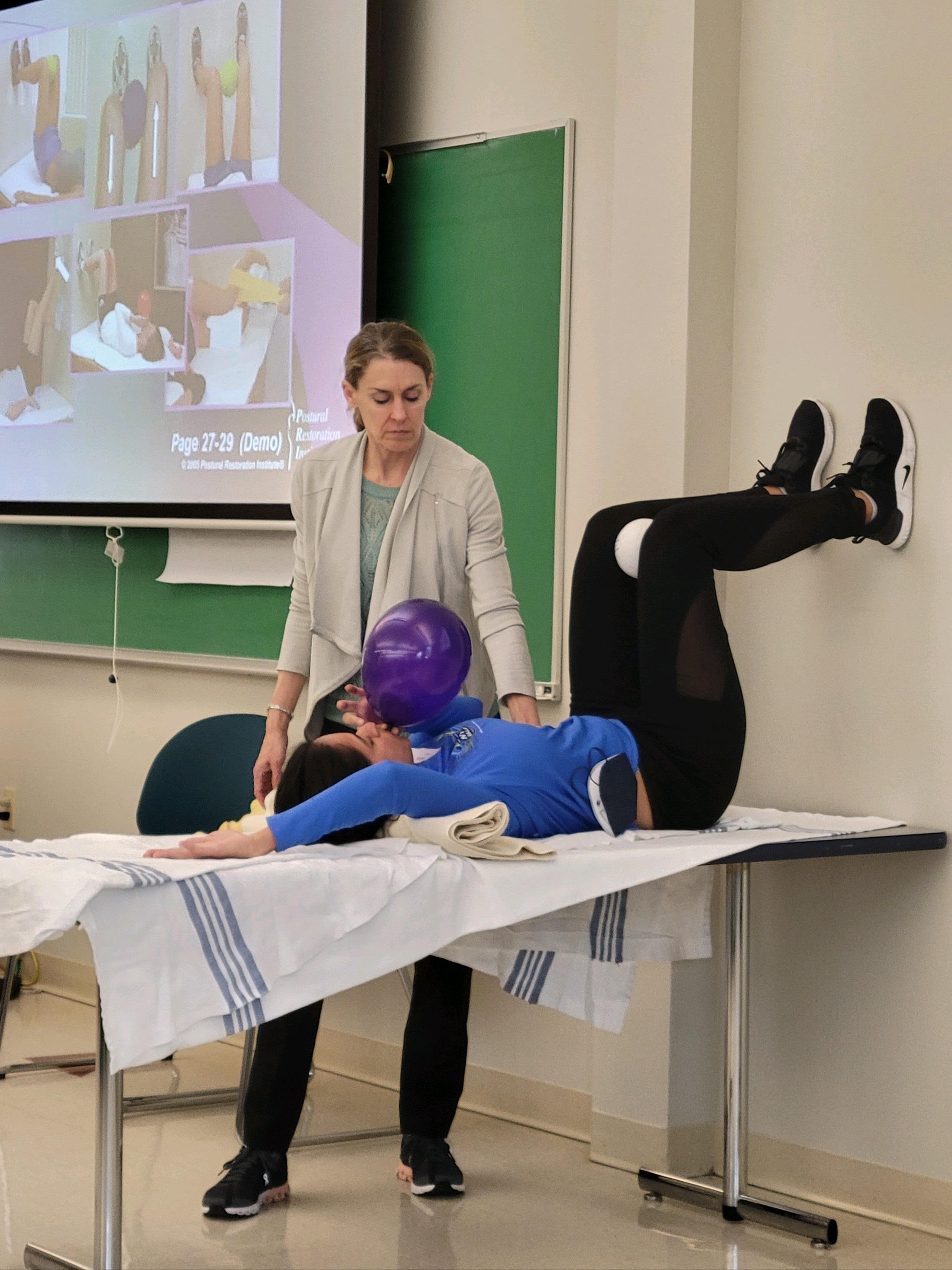
Our patterned, maladaptive hemi-diaphragm position and activity has consequences on movement, physiology, and behavior. Humans require oscillating compression and decompression of our lungs and rib cage to provide movement and ensure the health of our tissues, most notably the nervous system. An outward sign of this lack of oscillation is breathing pattern dysfunction, such as belly breathing, chest wall elevation, and superior T4 syndrome, the underpinnings of many of the syndromes that we treat.
Postural Respiration is a lab-heavy, hands-on course, better taken live, if possible. Participants came away proficient in performing and interpreting PRI’s objective tests to identify overactive left IAC, right BC, and B PEC chains of muscles and the pesky superior T4 syndrome. These patterns need to be inhibited so that we can efficiently and effectively inhabit the environment around us, without deleterious effects on our neuromusculoskeletal system.
A huge shout out to Frank Mallon, DPT, PRC, owner of Renaissance Physical Therapy in near-by Philly. Your expertise and instruction on the nuances of the Institute’s non-manual and manual techniques was invaluable!
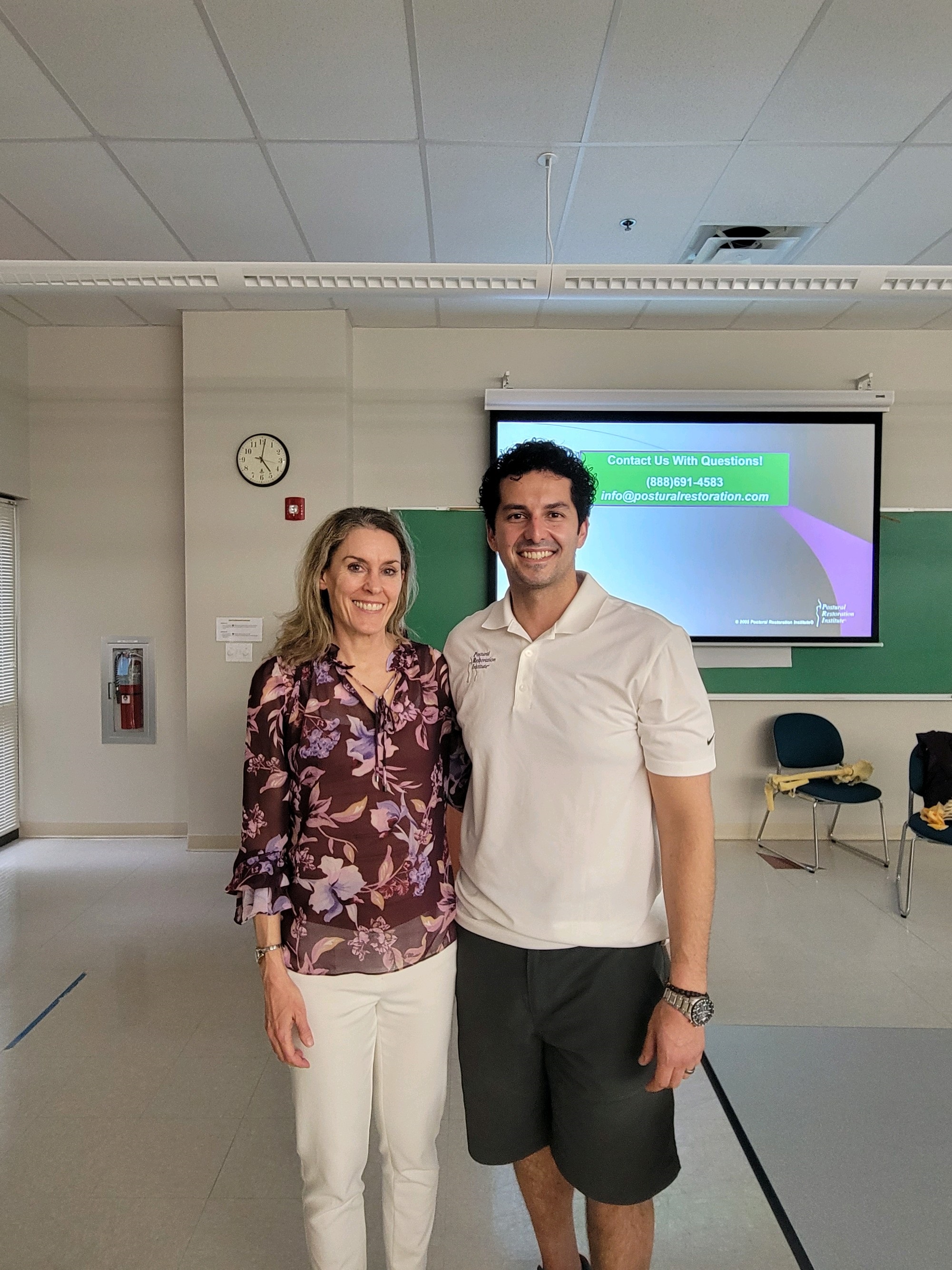
Thank you to all who asked questions and provided clinical comments, keeping the energy level high. Thank you to our models, who enhanced the learning experience: Kirsten Ditzler, DPT; Kelly Faller, PTA; Eileen Herman, PT; Isha Mody, PT; Joesph Newton-Pretko, DPT; Kyle Price, PT; Lori Shearer, PTA and Michael Polejav, PT who all helped facilitate our learning.
Thank you to the LGH clinicians for your efforts in set-up and clean-up. I appreciated the opportunity to present this material at the place where my PRI journey started.


